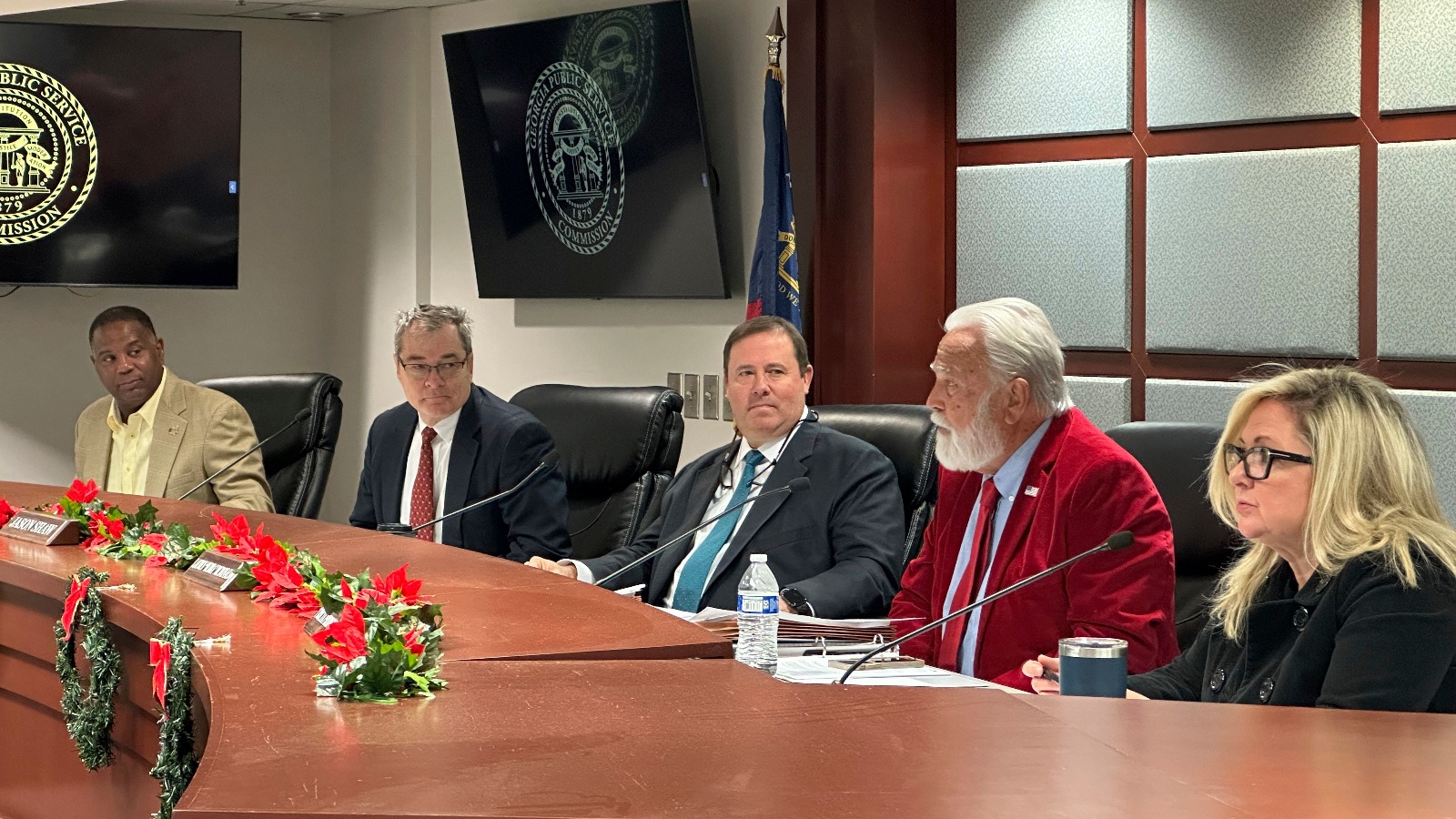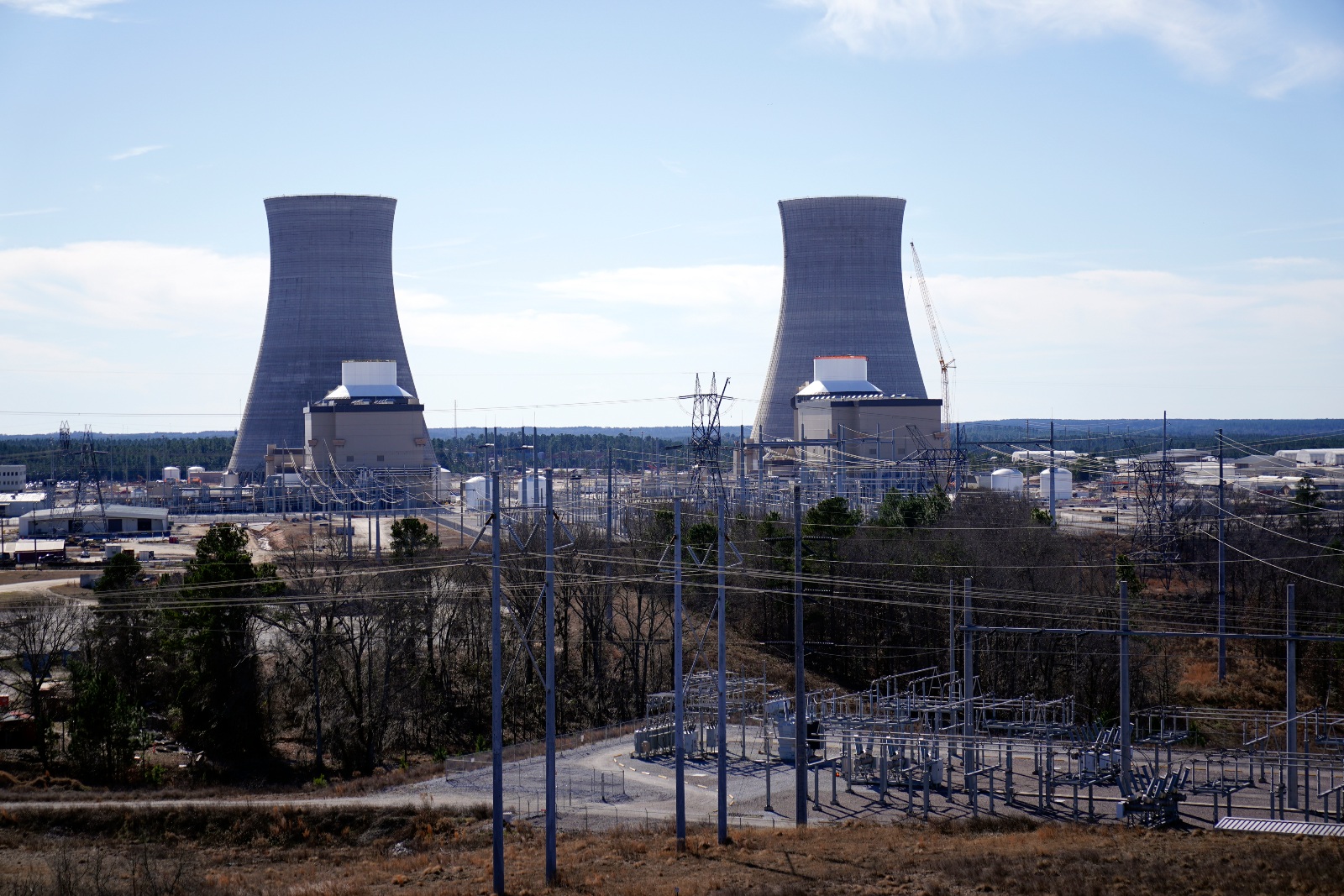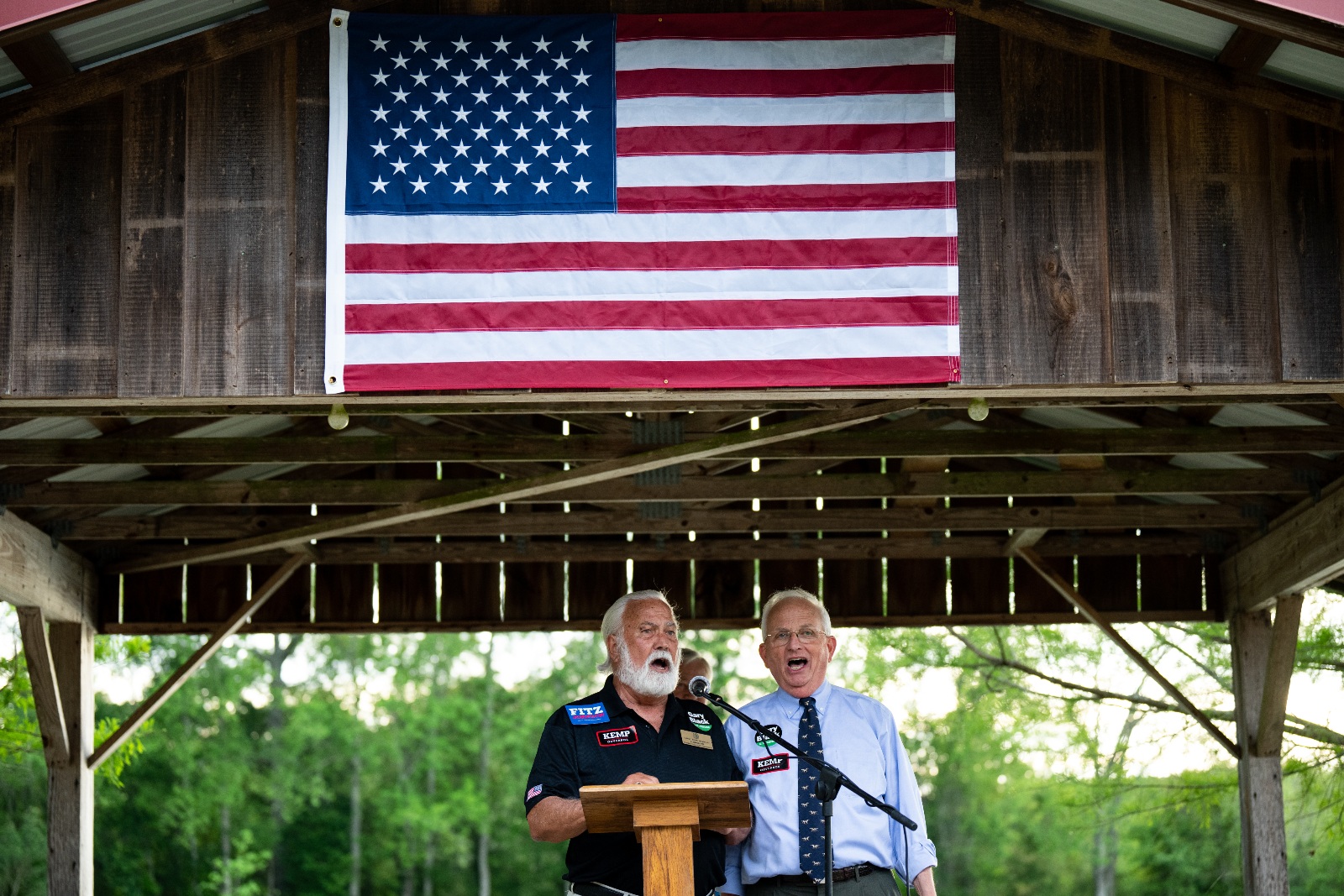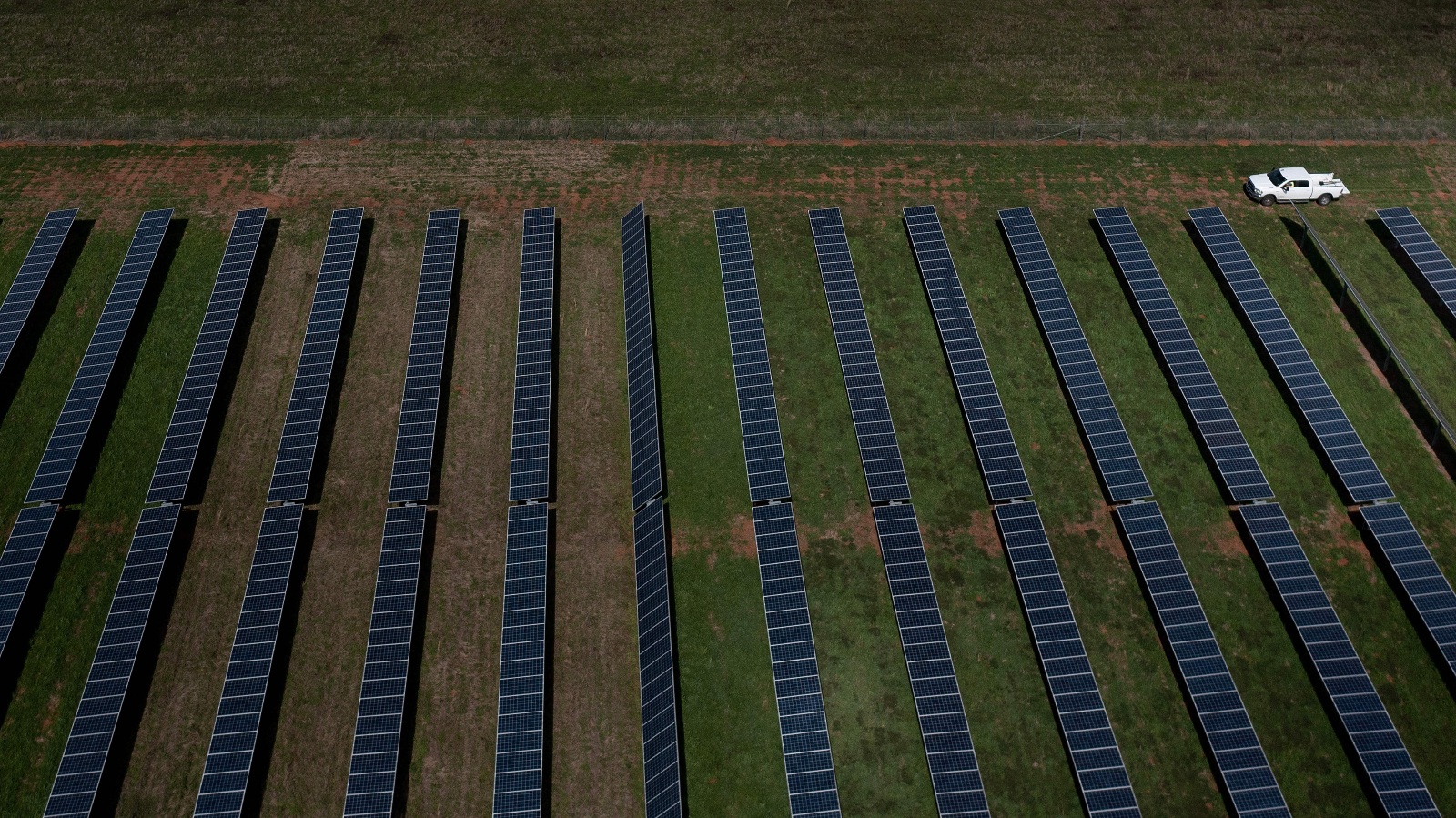This story is part of a collaboration with Grist and WABE to demystify the Georgia Public Service Commission, the small but powerful state-elected board that makes critical decisions about everything from raising electricity bills to developing renewable energy.
On a Tuesday morning in January, college student Aurora Gray stepped up to the podium in a windowless room in Atlanta, around the corner from the state capitol building. In front of her sat a five-member panel of elected officials that oversees how and where nearly every Georgia resident gets their power.
“The generation of energy … using fossil fuels has become an existential threat to our safety due to the undisputed impacts of greenhouse gas emissions on our planet,” Gray told the commission. “We must act now, as later is way too late.”
More than a dozen other students sat behind her, awaiting their allotted three minutes in front of the Georgia Public Service Commission, or PSC. One after another, they called on the commission to reject a request from Georgia Power, the state’s largest utility, to add new natural gas capacity to the grid. Instead, they repeated at the podium, the company needs to expand renewable energy and take other steps to combat climate change.
“You can help get Georgia Power to take the right actions in the essential time frame,” said high school senior Evelyn Ford, the last of the students to speak across two days. “Actually, you’re the only five people in Georgia who can.”
Ford is substantially correct. Though Georgia’s state legislature can pass laws on clean energy and the governor can issue executive orders on climate action, the Public Service Commission is the only government body with direct authority to regulate whatever Georgia Power does. The panel sets the rates people pay for electricity and approves the utility’s plans to make or buy that power and deliver it to customers. According to the commission’s own website, “Very few governmental agencies have as much impact on people’s lives as the PSC.”

There is a small panel of regulators in every state that holds a similar power over electricity generation and, by extension, an enormous segment of the United States’ greenhouse gas emissions that are warming the planet. By setting electricity prices, they also have a substantial impact on most people’s lives and pocketbooks. Yet, in Georgia and elsewhere, these groups — known as public service or public utility commissions — get little attention or scrutiny outside of energy wonk circles. Their hearings and documents tend to be long and jargon-heavy, covered in the media by a small group of specialized reporters, making it hard to engage with the process.
This year, Grist and WABE will try to demystify energy regulation in Georgia and beyond. We’ll bring you stories on not only how your power gets made, but how those decisions happen — and how residents who vote and pay electricity bills can get involved.
How the Georgia PSC makes decisions
The Georgia Public Service Commission was established in 1879, first as a government body to regulate railroads and later expanded to address the services popping up in an increasingly electrified and connected state. Today, the PSC oversees investor-owned utilities, as well as natural gas pipelines and telecommunications.
Georgia has 42 member-owned cooperatives and 52 municipalities that provide electric service to residents. But Georgia Power is by far the state’s largest electricity provider, serving 2.7 million customers, from the Tennessee border to the coastal islands. It is also Georgia’s only investor-owned electric utility — meaning it is the only power company whose rates and operations the PSC directly oversees. For most Georgia Power power customers, it’s their only option to buy electricity.
At the core of the commission’s oversight of Georgia Power are two main decision-making processes: the integrated resource plan and the rate case.
Every three years, the utility updates its 20-year plan for making and delivering electricity, the IRP. This involves forecasting how much power Georgians will need and laying out what combination of resources — coal and gas plants, nuclear energy, solar fields, hydroelectric dams, and purchase agreements with other utilities — Georgia Power will use to meet that demand. It also evaluates anticipated updates and maintenance to the company’s system of transmission lines, transformers, and other infrastructure that delivers power.
As of 2022, the last time the PSC approved an IRP, Georgia Power still got its energy mostly from fossil fuels: 48 percent natural gas and oil, 15 percent coal. Nuclear energy accounted for another 23 percent, with 7 percent coming from renewables — mostly solar — and 2 percent from hydropower.
Update: In July 2025 the PSC approved a new IRP, but the resource mix remains similar.
The rate case determines how much Georgia Power’s customers pay for this electricity. In addition to the base cost of power, the company is allowed to pass on to customers the cost of building and maintaining the infrastructure approved in the IRP, as long as the PSC signs off on it. Throughout the construction of new nuclear reactors at Plant Vogtle, for example, customers have paid an added fee of up to 10 percent, $3.88 to $7.97 for the typical customer, every month to cover the costs of financing the project.

As an investor-owned company, Georgia Power also aims to make a profit; the commission decides how much it can make by setting a figure in the rate case called “return on equity.”
That last point is often a particularly contentious one. The commission, by its own description, “must balance Georgia citizens’ need for reliable services and reasonable rates with the need for utilities to earn a reasonable return on investment.”
But the company’s profits rankle many Georgians who face a high energy burden, meaning they spend a high proportion of their income on energy. Atlanta ranks fourth in the country for its median energy burden, and third for energy burden among low-income households.
“Tell them they make enough profit,” former Democratic state Senator Vincent Fort urged the commission during Georgia Power’s last rate case. “Tell them that you are standing up for regular folk.”
There are a lot of opportunities for input before the Public Service Commission decides on IRPs and rate cases. Along with public commenters like Fort and the group of students last month, a subset of PSC employees, known as the public interest advocacy staff, advocate for ratepayers’ interests in the hearings. Other organizations, including environmental and consumer advocacy groups, major electricity buyers, and cities, can engage in the hearings as well. These stakeholders and the public interest advocacy staff present expert testimony and cross-examine each other’s witnesses as well as Georgia Power’s representatives.
Often, the commission’s public interest advocacy staff strikes a deal with Georgia Power that resolves most of the issues in an IRP proceeding or rate case. But the final decision ultimately rests with the five commissioners, who can approve or deny an agreement and can amend it before voting.
How the Georgia PSC’s decisions relate to climate change
The PSC has the authority to alter Georgia Power’s business proposals and dictate its energy mix — thereby significantly controlling the state’s greenhouse gas emissions. In fact, they already have. In 2011, commissioner Bubba McDonald added 50 megawatts of solar power to Georgia Power’s generation mix. When the utility updated its long-range plan for power generation, known as an integrated resource plan, or IRP, in 2013, the commission more than doubled the solar capacity that Georgia Power asked for. In subsequent IRPs, which happen every three years, the commission continued to order more solar than the utility proposed. By 2023, the state ranked seventh in the country for solar power. Georgia’s emissions dropped by 5 percent from 2017 to 2021, and power generation dropped below transportation as the leading emissions source. Researchers credit the change largely to the solar growth that the commission mandated.
But the PSC has also upheld and prolonged fossil fuel energy generation in Georgia. In the utility’s most recent IRP, in 2022, the commission approved six agreements to purchase natural gas power for more than a decade into the future over the objections of consumer and clean energy advocates. The utility also sought to shutter several coal plants in its latest long-term plan, the 2022 IRP, saying they would soon no longer be economical to run — but the PSC put off a decision on one of them, meaning the facility will keep burning coal for the foreseeable future.
How the PSC is elected
Five elected members sit on Georgia’s Public Service Commission. Each member represents a district, where they’re required to live, but elections for the positions are statewide.
While some city offices have similar arrangements, this is an unusual system at the state level. Georgia lawmakers devised it in the late 1990s, with the idea, according to its architects, that it would reflect the commission’s unique job regulating a statewide industry that has local impacts. Former Georgia House Speaker Terry Coleman told WABE that lawmakers wanted to figure out “how we could make sure that places outside of the metro areas had representation.”
But civil rights and environmental activists contend that because the commissioners are chosen in a statewide vote, they don’t really represent the people in their districts. The commissioner for District 3, covering Metro Atlanta, for instance, is elected not just by Atlanta residents but by voters in rural South Georgia and the mountains of North Georgia — areas with starkly different demographics, politics, and needs. A recent lawsuit by a group of Black voters in Atlanta found that this system violates the Voting Rights Act by diluting their votes, preventing them from seating the candidate of their choice on the commission.

“Representation matters,” plaintiff Brionté McCorkle, executive director of the group Georgia Conservation Voters, told WABE. “It’s the most important thing to have at least one person on the commission that represents the unique and particularized needs of your district.”
The Georgia Secretary of State’s office argued during the lawsuit that the advantage the PSC voting system creates is political, not racial. This is a key distinction, because while the Voting Rights Act bans racial gerrymandering, the Supreme Court has held that election systems that favor a political party are allowed.
All of the current commissioners are Republicans. Most remain supportive of natural gas — serving on gas industry boards or promoting it in the press. In a state where a third of residents are Black, only two Black commissioners have ever served on the commission during its 145-year history, both of them appointed to fill vacancies. Four of the 5 the current commissioners were initially appointed to fill vacancies before running for reelection as incumbents.
Siding with the plaintiffs in 2022, a federal judge blocked that year’s elections for two seats on the commission and ordered that the system be redesigned. But the 11th U.S. Circuit Court of Appeals reversed that decision last year. A further appeal hasn’t been filed yet, but the plaintiffs have said they’re exploring options.
In the meantime, the commissioners who were up for reelection in 2022, Tim Echols and Fitz Johnson, continue to sit and vote on the commission. Another commissioner, Tricia Pridemore, is due to face reelection this year. But none of those races are scheduled for 2024 as the election case hangs in limbo.
Update: In June 2024 the U.S. Supreme Court declined to take up the election lawsuit, and elections have resumed according to a schedule laid out by the Georgia legislature. Two seats will be up for election in November 2025. Get a quick guide to the election and candidates.
How other state energy regulators work
While these policies and procedures are specific to Georgia, some version of them plays out all over the country.
Every state has a public service or public utility commission that controls electricity. In 10 states, utility regulators are elected directly by ballot. In the remaining 40, they’re appointed by other elected officials, like the governor or state legislature. Many, though not all, states require their utilities to file IRPs that predict future demand for power and map out how the utility will meet that need.
What’s common nationwide is that the future of clean energy hinges on the decisions of these public utility commissions. Cities, states, and companies can resolve to cut emissions, but if they buy power from a regulated utility they don’t ultimately control how their power is made; the regulators do. Even the Department of Defense, with its $800 billion budget, is subject to the decisions of these commissions.

Utilities’ own climate change goals, too, depend on these commissions. Southern Company, Georgia Power’s parent company, has announced plans to shutter most of its coal plants, but that plan can only move forward if approved by utility commissioners. Similarly, regulators approve or deny plans to build solar and wind farms, nuclear plants, and battery storage facilities. Elect or appoint commissioners who don’t prioritize clean energy and climate goals set by companies or governments have little chance of succeeding.
As Americans concerned about climate change, environmental justice, and energy affordability look for ways to make an impact, public utility regulators often go unnoticed as powerful decision makers who could change the course of U.S. emissions — if they choose to act.
Grist and WABE’s reporting over the next year aims to examine these commissions and their outsize role in American households and climate policy. To ensure our stories reach and involve residents who face the biggest barriers to accessing accurate, consistent information, we are hosting workshops with community partners, creating printable resources, and launching a paid journalism training program.
Correction: This story originally misidentified which U.S. Court of Appeals reversed a federal decision.





